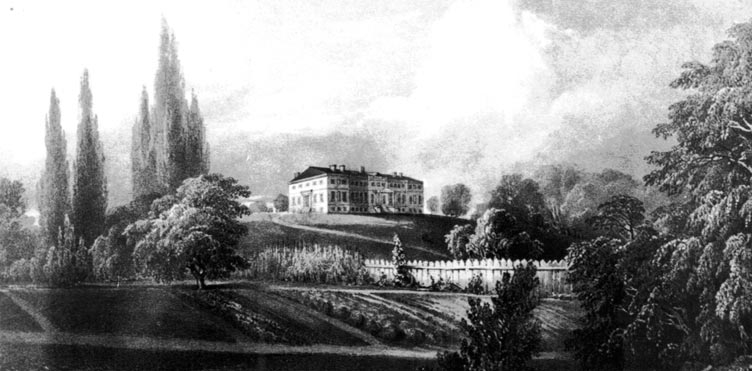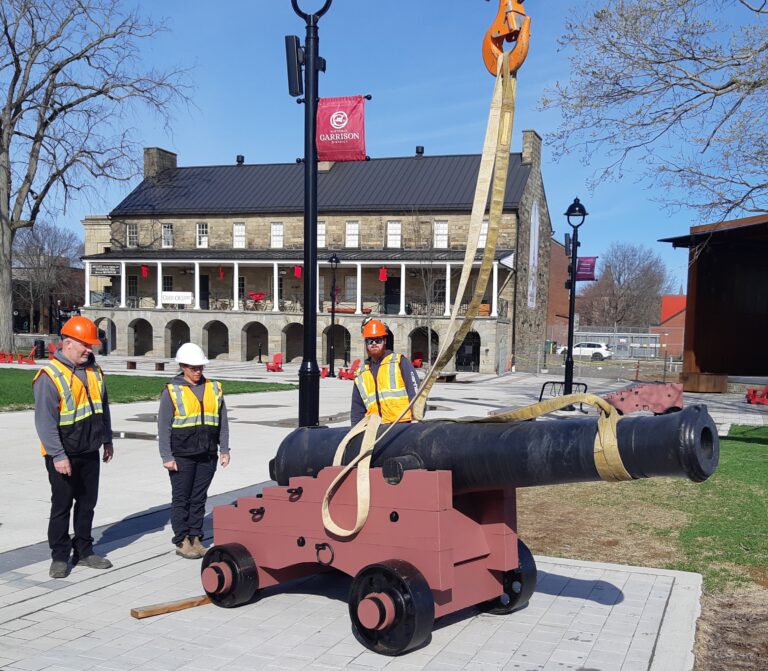Joel Rumson
During the 2022-2023 school year, UNB Collected over $232.5 million total, and owns approximately 10,000 acres of land.
Leaving some students wondering…. “Where does the money even go?”
With a 1% assumed growth in the provincial operating grant, increased short term interest rates, and a return to normal revenue levels, there is an anticipated increase in UNBF revenue of 5.9% or $13.0 million over the previous 2021-2022 year.
Within the 2023 consolidated expense budget, UNB forecasts a 9.3% increase of on-campus revenue as campus transitions from post-covid conditions. On campus revenue includes areas such as, parking fees, UREC, athletics, event admissions, and campus space rentals.
Boasting a comprehensive 2022-2023 plan, the UNB budget reflects… “optimism”… as said by Paul Mazzerole, President of UNB.
As such, In response to projected increases of admittance, UNB will, optimistically, raise tuition rates by 4.5% in order to maintain “competitiveness with our peers across the country,” as stated in the 23” budget.
Revenues within UNB are primarily (90%) derived from tuition, student fees, and provincial operating grants, thus, an anticipated 13.4% increase in admission revenues and a 4.5% increase in tuition cost over 2021-2022 term holds large potential for growth of both on and off campus resources.
The optimistic budget was planned according to UNB’s decision making framework and helped divide funding initiatives across differing goals present in the framework.
Within the decision making framework, UNB aims to showcase responsible land stewardship, implement a transparent decision-making process driven by community engagement, actively seek and incorporate community input, preserve the long-term value of university lands, and align policies with government legislation such as the New Brunswick Community Planning Act.
But… How?
Off Campus Land Management
In order to maintain reputations and social support, the Capital Planning and Operations sector of UNB recognizes the importance of being a responsible steward of its lands, as such, adopted land management strategy to guide the management of its valuable land assets.
The management strategy is generally applied, but spans across all of UNBs parcels and contributes differently to the institution’s commitment to environmental stewardship and educational excellence.
Regarding stewardship, and management, UNB manages a number of forested land:
- Fredericton Campus – 143 acres
- Saint John Campus – 224 acres
- UNB Noonan Forest – 3,780 acres
- UNB Woodlot – 3,815 acres
- Currie Mountain – 32 acres
- Pinder Block property – 130 acres
- Springford Reserve – 121 acres
- Taymouth forest – 90 acres
- Nelson Adams forest – 300 acres
- Goshen Forest – 100 acres
- Canterbury Forest – 100 acres
Among these holdings, the largest parcel is UNB Noonan Forest, a teaching and research resource for Forestry and Environmental Management, is owned and shared by various institutions, including the Canadian Forest Service and Maritime College of Forest Technology. Acquired in 1982 as part of the Hugh John Flemming Forestry Center construction, the Noonan forest encompasses 3,534-acres of woodlot and is located 20 km east of Fredericton, NB.
Alongside the UNB Noonan Forest, is the UNB Woodlot. The UNB Woodlot, situated on the southern outskirts of Fredericton, is a sprawling natural haven locally recognized as Fredericton’s prominent forested area. Covering an expansive 1,500 hectares (3,815 acres), it stands as the largest forested property owned by the University of New Brunswick (UNB).
The woodlot serves as a focal point for education and exploration. Benefitting UNB faculty and students, as well as those from the Maritime College of Forest Technology and the broader Fredericton community. Students engage in hands-on learning, honing their natural resource management skills through field techniques such as species identification, monitoring, and measurements.
Simultaneously, community members find solace and recreation amidst the woodland, utilizing it for activities like walking, jogging, bird watching, cross-country skiing, and fostering a deeper connection with nature.
Meanwhile, Currie Mountain, a 32 acre site in Douglas holds geological significance with volcanic origin and unique brown forest soils.
Gifted to the University of New Brunswick by Earle and Louise Turner’s, Curry Mountain spans 60 acres and features a mountain of volcanic origin and a half mile of shoreline, and serves as an outdoor classroom for students in botany, forestry, and geology.
Moving southwest, Pinder Block property, spanning 130 acres near Tracy, offers unique value for forestry and environmental management courses, showcasing distinct soil characteristics compared to the UNB Woodlot.
Further enhancing UNB’s land portfolio is Springford Reserve, a 121-acre parcel in Welsford, NB – generously donated by Norma Linton and William Springford in 1988 – to promote wildlife conservation. The area also features new growth forest habitats following a fire, primarily dominated by Red Pine (Pinus resinosa), a species not naturally occurring on other University properties.
The Taymouth forest was acquired by UNB through a land trade and encompasses approximately 90 acres. At the time the Department of Transportation (DOT) was twinning a section of highway and proposed a land trade to acquire a section of UNB’s property. The deal was finalized in 2020.
The Nelson Adams forest, A 300 acre forest which was donated by Mr. Nelson Adams, an alum of the forestry program at the University of New Brunswick. Mr. Adams had used the woodlot for a variety of timber and non-timber forest products believing ground hemlock contained tannins that may cure cancer.
There is also the Goshen Forest of Marrtown, NB. A 100 acre property which has held little harvesting in the past 50 plus years. This lowland site is home to primarily softwood species but has several White ash (Fraxinus americana) measuring over 80 cm diameter at breast height (DBH).
Finally, there is the Canterbury Forest. Being approximately 100 acres, the Canterbury Forest contains unique forest conditions not seen in abundance on the remaining land owned by UNB. Containing a pure shade-tolerant hardwood stand that dominates the southern half of the property, there are plenty of Sugar maple, American beech and some Yellow Birch.
By the way, you could fit approximately 110-150 standard car parking spaces in an acre. Or, if that doesn’t do it, try, picturing 60% of a soccer pitch, 75% of an American football field.
Reviewing the land and different UNB campuses, UNB manages 8688 acres… suddenly 5 assignments are not so overwhelming.
For reference, The City of Fredericton encompasses 32 000 acres.
On Campus Management
Transitioning from off-campus management to on-campus management, from a world of forested land to orange construction pylons and preoccupied parking spaces, UNBF campus is undergoing a massive revitalization.
Student Union Building (SUB)
Starting at the top of the UNB hill lies the SUB of which is experiencing its own rehaul, leaving some students a bit confused.
With walls appearing out of thin air, and the hallways of yesterday being walls today… it can be difficult, and confusing to navigate.
Many, including myself, were left to wonder, “What even is UNB doing here?”
UNB is relocating the bookstore and pharmacy 500 meters uphill from across the Forestry Building into the SUB.
The goal for the project is to provide a ‘rejuvenated space for students, including a centralized location for the bookstore and campus pharmacy.’
With completion serving as a Holiday gift to students, it is anticipated to be finished on December 31st, 2023.
In the meantime a map to navigate the place would have helped…
Phase one of construction was to begin spring 2023, and included the bookstore and pharmacies opening, a retail space for students, and a reimagined student lounge space.
Phase two of construction encompassess a new elevator as well as additional lounge areas for students as well as holding meetings. The date to which phase two begins is undetermined.
Further information regarding objectives, considerations, and processes included in SUB revitalizations are not public.
Science Library
Moving down the UNB hill sits the Science Library serving as the Faculty of Forestry, Environmental Management and the Departments of Biology as well as Chemistry, Earth Sciences, Math and Physics.
Located within the IUC Concourse (building 17 on the campus map), just outside the doors are the IUC Café and lounge.
On November 29, 2022, University of New Brunswick unveiled a modern and environmentally sustainable project encompassing the installment of a solar and vegetative roof.
Led by Dr. Paul J. Mazerolle, the project resulted in a $660K reduction in deferred maintenance and aligns with UNB’s strategic goal of becoming a modern, integrated, and sustainable institution.
Initiated in the summer of 2021 and completed by the end of the summer of 2022, the project aimed to replace the original 1976 roofing system, which was well beyond its expected useful life, leading to leaks and failures. The total cost of the project was $2.1 million.
Key staff from UNB’s Office of Capital Planning and Operations, along with design teams from Fishburn Sheridan & Associates, MCW Maricor, Flynn Canada Limited, and FCC Construction, held crucial roles in the implementation of the project.
Craig Hickey, UNB’s project manager, highlighted the necessity of the replacement due to widespread failures in the existing roof membrane.
Hickey stated, “The existing roof membrane had failed in numerous locations and leaks were common in the IUC Central Core and Science Library.”
The vegetative roofing system features a variety of drought-tolerant and low-maintenance plants, primarily sedums, selected for their hardiness in New Brunswick’s climate zone. Additionally, the lower half of the roof incorporates solar panels for green power generation.
Mary Jane Adams, associate vice-president in the Office of Capital Planning and Operations, expressed pride in the project, emphasizing UNB’s commitment to sustainability. She noted that this initiative contributes to UNB’s 2050 carbon neutrality goals as part of the university’s Climate Change Action Plan.
Overall, the project is expected to extend the life of the building, enhance sustainability efforts, and provide tangible benefits for both management and student well-being.
Engineering Building
With the engineering faculty as the longest-standing in Canada, UNB aims to pioneer its legacy by revitalizing the entrance into a ‘living laboratory’.
Thanks to UNB engineering alumnus Bill Cooper and his recent $1.1 million donation, the construction of a new Engineering Commons at the entrance to Head Hall has begun.
This innovative space, designed by Murdock & Boyd Architects, integrates sustainability by featuring mass timber wood columns and a glass façade. The project being valued at $22.9 million, aims to provide an open-concept learning environment, fostering collaboration among undergraduate and graduate students.
The emphasis on mass timber construction is a key aspect, offering a warm and culturally resonant atmosphere.
“A big feature of the building is the mass timber,” said Greg Murdock, president of Murdock & Boyd Architects.
“People will gravitate to wood because it’s warm, it feels good and It’s part of our culture. All the engineering disciplines that provide services to the building, such as mechanical ventilation, plumbing and electrical, would be exposed. It would be almost like a live laboratory for all students studying in the building.”
Ellis Don, the construction manager, promised energy efficiency by installations of LED lighting, sensor-controlled fixtures, and a state-of-the-art sprinkler system for enhanced safety in the mass timber structure.
The project acts toward UNB’s sustainability goals and cost-effective maintenance.
Innovations include earth tube technology for ventilation air preheating or cooling and a heat recovery chiller/heat pump. Where at the heart of the commons there will be the Student Success Centre.
A student success center planned as a 1,500-square-foot space enhancing the student experience with tutoring, peer mentoring, counseling, and technology loan programs.
Dr. Josh Leon, the Dean of UNB’s faculty of engineering, emphasizes the evolving nature of engineering, requiring collaborative spaces for multidisciplinary work.
“Engineering has changed a lot over the years,” said Leon. “We need spaces for students to meet and get together to talk about problems.”
The new commons addresses this need, supporting the faculty’s growth goals and responding to the high demand for engineers in Atlantic Canada and beyond. Not only preserving historical significance but also sets the stage for the future of engineering education at UNB.
Small Scale Constructions
Besides large scale projects, the university has had an extensive lineup of smaller projects spanning various facilities and areas.
First, the Forestry & Geology Freight Elevator project, which commenced on May 9, 2022 and concluded on September 30, 2022, involved the replacement/modification of an existing freight elevator to a passenger elevator.
Other completed projects included the demolition of Incutech #3 or the Enterprise Building on 2 Garland Ct. (May 2, 2022, to July 29, 2022), the BMO Field Synthetic Turf Field Replacement (June 13, 2022, to July 31, 2022), and the Wu Centre Renovation for Marketing & Communications Space (May 24, 2022, to July 15, 2022).
Masonry repairs to the main entrance of the Enterprise #1 building (May 16, 2022, to July 4, 2022) and renovations to the IUC Science Library & Forestry Geology door (June 27, 2022, to August 26, 2022) have also been completed.
Showcasing the wide range of improvements, it is clear that the university is installing infrastructure to which benefits students.
Moving Forward
In conclusion, as UNB continues to advance in the competitive world of education, the implications of its decisions extend far beyond its campuses.
The university’s role in managing significant land assets, investing in sustainable infrastructure, and engaging with the community positions it as a key player in shaping the environmental and urban future of Fredericton.
The growth of the city, coupled with challenges like population growth, urbanization and development underscores the need for responsible and innovative practices in land stewardship and community development.
It is essential for UNB to not only adhere to mandated protection measures but to set a higher standard in sustainable and community-focused development. For if they do, the strategies and initiatives adopted today will play a crucial role in determining the ecological and educational landscape for future generations, underscoring the importance of responsible, forward-thinking leadership in a rapidly evolving world.




